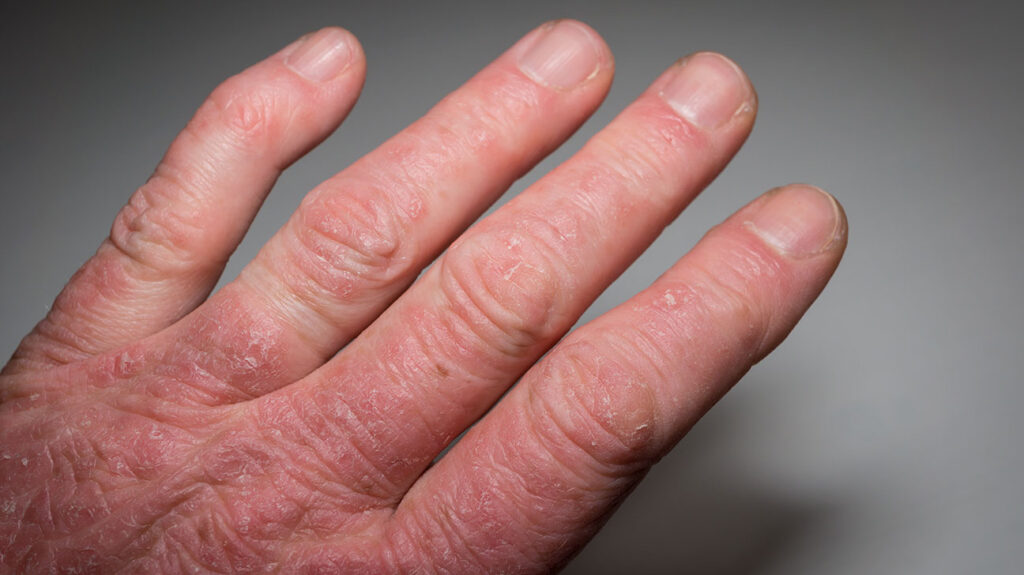
Psoriatic arthritis (PA) is a form of arthritis that affects some individuals with psoriasis, a condition characterized by scaly, red, and irritated skin. Typically, people develop psoriasis first and don’t experience arthritis until later, though joint issues can appear before skin patches in some instances. Roughly 30% of people with psoriasis will develop the joint condition. Find out more about this inflammatory autoimmune condition below.
What Are the Symptoms of Psoriatic Arthritis?
Pain, stiffness, and swelling in the joints are the hallmark characteristics of PA. Because the condition has a widespread inflammatory effect, other parts of the body may be affected as well. The joint pain may occur anywhere, but the most common sites are the neck, back, shoulders, elbows, wrists, fingers, knees, ankles, and toes. The joint stiffness is usually most pronounced in the morning.
Beyond the joint pain itself, PA can also cause enthesitis or inflammation of the connective tissue. It often occurs in the foot around the heel, which can make walking and even standing difficult. The hips, elbows, knees, and chest may also be affected by enthesitis. People with PA may also experience fatigue.
Like other inflammatory conditions, PA increases the risk for several potentially serious conditions, including damage to the eyes, heart conditions, Crohn’s disease, and non-alcoholic fatty liver disease.
What Causes Psoriatic Arthritis?
PA happens when the body’s immune system mistakenly attacks healthy tissues, resulting in an immune response that causes joint inflammation and an overproduction of skin cells. Experts aren’t exactly sure what causes the condition in some individuals, though it appears that a combination of genetic and environmental factors contribute. In addition to having a family history of PA, being overweight, smoking, and certain infections or injuries are also risk factors.
How is Psoriatic Arthritis Treated?
PA typically requires a two-pronged approach to address both psoriasis and arthritis symptoms. For arthritis, patients might use non-steroidal anti-inflammatory drugs (NSAIDs), steroid injections, disease-modifying anti-rheumatic drugs (DMARDs), or biological therapies.
To treat psoriasis, there are creams and ointments available, as well as retinoid tablets, certain DMARDs, and ultraviolet light therapy.
Lifestyle approaches, such as following a healthy diet and exercising regularly to maintain a healthy weight, avoiding smoking, and minimal sunlight exposure could also help to control symptoms.
Many patients also explore complementary treatments, such as stem cell therapy, to control symptoms of psoriasis, arthritis, or both. Although these treatments may not be able to reverse the joint damage already done, they could help slow its progression and manage discomfort levels. By using mesenchymal stem cells that can be sourced from either adipose or donated umbilical cord tissue, patients may experience benefits who seek relief from pain, improved mobility, and an overall improvement in the quality of life.
This post was written by a medical professional at Stemedix Inc. At Stemedix we provide access to Regenerative Medicine for knees, also known as stem cell treatment for knees florida! Regenerative medicine has the natural potential to help improve symptoms sometimes lost from the progression of many conditions.